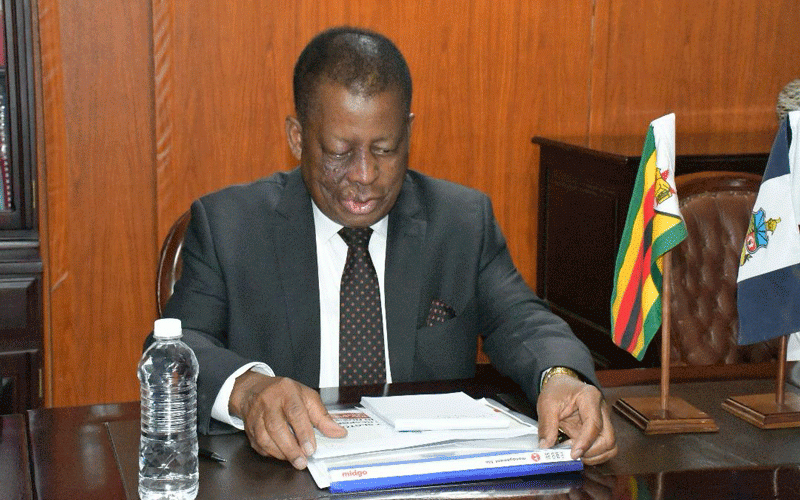
Environment By Kennedy Nyavaya
Recent revelations that the Zimbabwe Parks and Wildlife Management Authority (ZimParks) is sitting on elephant tusks worth over US$ 300 million has opened a Pandora’s box on wildlife conservation and its meaning to the citizen.
Naturally, the government sees big bucks, while animal lovers deduce a horrific picture of the massive jumbo deaths over the years, but both perspectives are foreign to the ordinary rural folk.
Zimbabwe’s elephant herd is estimated to be in excess of 84 000, almost double its carrying capacity, and that makes the landlocked country the second largest home to the species worldwide after its western neighbour, Botswana.
The numbers sound good for tourism, but the countryside population sharing the same habitat is living a life of second-guesses due to the inevitably rampant human-wildlife conflict this jumbo boom has brought albeit with minor economic benefit to show for it.
This is what representatives from over 30 African countries, that registered to participate in the inaugural African Union and United Nations Wildlife Economic Summit, met to discuss in Victoria Falls last week.
Part of their main agenda for the timely platform was to structure policies on use of wildlife resources to turn around African economies, according to President Emmerson Mnangagwa in a speech to officially open the conference.
“We must, therefore, continue to utilise platforms such as this one, to explore innovative ways to leverage wildlife resources to grow our economies, eradicate poverty, achieve broad-based empowerment, and create decent jobs, especially for women and youth,” said Mnangagwa.
- Chamisa under fire over US$120K donation
- Mavhunga puts DeMbare into Chibuku quarterfinals
- Pension funds bet on Cabora Bassa oilfields
- Councils defy govt fire tender directive
Keep Reading
Issues, including wildlife impacts on ordinary people and how the continent can manage human-wildlife conflict, were also on the table with binding resolutions as a result.
The conference came hot on the heels of the Kasane Elephant Summit, where southern Africa heads of state met in Botswana earlier this year to map out a common position on elephant management in the region, which is an estimated home to over half of the world’s total elephant population.
In unison, the nations challenged dictates of the Convention on International Trade in Endangered Species (Cites), an 84-member states agreement Zimbabwe is a signatory to, appendix one status that completely forbids ivory trade as a measure to curtail poaching.
Zimbabwe is currently on appendix two, where it is allowed to trade albeit under strict regulations.
“We have a war as Southern Africa that other countries are prescribing the way we should handle our animals, especially the elephants,” ZimParks director Fulton Mangwanya told a parliamentary committee recently.
“Wildlife occurring in communal areas has the potential to grow the economy of the local communities.”
These sentiments carry strong meaning ideally, but despite bearing the brunt of being socialised with the wild species, the rural settlers know the opposite to be true as elephants continue to be a menace to both ecosystems and socioeconomic efforts without tangible financial benefits to talk of.
According to Mangwanya, this is what they want to address through frameworks like the virtually defunct Communal Areas Management Programme for Indigenisation Resources (Campfire), set for re-launch soon, which was being abused by local government authorities.
“The money was failing to go down to the communities, so the re-launching will see the communities benefiting in terms of clinics and roads because it was being used for salaries for the rural district council,” he said.
Inevitably, seeing little value from the animals wreaking havoc in their communities, people have reacted with hostility and corrupt means to extract value from the situation.
This has given way to the rise of more lucrative cartel poaching, a dirty business with high returns.
Research points at this trade of tusks and rhino horns across the world as being a multibillion dollar business, ranked among other underhand dealings like weapons, human trafficking and illicit drugs.
These high stakes have seen powerful figures, mostly politicians, being fingered in syndicates smuggling the ivory that either lies idle in the country’s ivory vault or conservancy areas through funding of poaching activities.
In most cases they use the impoverished locals to carry out the donkey work.
In Zimbabwe’s case, powerful names have in the past found themselves in the damning long list of alleged perpetrators.
“Politicians are just humans with a lot more power, but less checks and balances, (so) of course governments are involved in big (poaching) business,” said World Wide Fund for Nature (WWF) director for Africa and South America Philipp Goeltenboth.
Goeltenboth said there is need to plug these holes in environmental management by first getting rid of the misconception that elephants are only destructive.
“People struggle with elephants raiding their fields or lions taking their cattle and in some cases there are a lot of people that die from these animals, so they are considered to be destroying land and nothing else,” he said.
Goeltenboth reinforced that tactical management of the natural resource could encourage a conservation culture while collectively benefiting communities in the process mainly through tourism.
It would get rid of the current negative perception that jumbos are worth more when dead than alive and that is what the WWF seeks to achieve through programmes like Southern Africa’s Kavango- Zambezi Trans-frontier Conservation Area (KAZA), home to 61% of the world’s elephant population.
“The idea here is to create a system where those local communities can really benefit or access that wealth and the way it’s set up is communities getting a title and rights for the land so they can manage the natural resources for that land,” he said.
WWF communications executive Marco Vollmar also weighed in saying that research had shown that communities’ affirmative participation could unknot the clashes where “in the end everybody is losing”.
“It is proven by a lot of studies that this way of protecting nature via local communities is the major driver to protect biodiversity in this region because we have examples of human and wildlife conflicts where usually species are losing and in the end everybody is losing,” Vollmar said.
These recommendations could be a slow process for a Zimbabwean administration yearning for a simultaneous quick fix to the elephant problem while reaping financial benefits.
Mnangagwa insists that trade should be open and those with elephants must set the tone of what to do with the resource as they have proven to be responsible in the past.
“We call upon the institution to resist the temptation of being a ‘policing institution’ and instead be a developmental one, which promotes the intricate balance between conservation and sustainable utilisation of all wildlife resources,” he said in his speech.
But, a litany of questions confront his argument on whether all the other options — including live sales, trophy hunting and translocation from areas of overpopulation to areas of lower population — have really been exhausted before they go for the kill.
With culling being a non-starter due to international restrictions, there might be need to also explore avenues of how a substantial value tag can be put on this abundant live fauna to benefit humans living in the same areas as these animals without spilling blood.
Authorities insist that allowing formal trade of tusks could help the country better its environmental conservancy efficiency and help victims of the human-wildlife conflict get compensation that is currently hampered by scant resources available.
“We are hampered by lack of funding, which we are saying as soon as we are allowed to sell the rhino horn which we have, or tusks, we can actually accomplish without any problems, but we have these restrictions,” said Mangwanya.
“We are sitting on money, but we do not have money.”
In a country where embezzlement of public funds is rife, one wonders if there is any truth in these words and if there will be any accountability of the money amassed from the sales.
The prospects are bleak given the sickening corruption levels within government structures and alleged involvement of the country’s political elite in the dark poaching business.
It seems that is not a discussion the wildlife authority wants to have as it has already warned that they will pull out of Cites (which the country ratified in 1982) along with regional peers if not allowed to trade freely.
“When push comes to shove, Southern Africa, especially KAZA, is in agreement that we might go into reservation by pulling out of Cites,” Mangwanya revealed.
However, the arguments beg the question of sincerity on whether ZimParks’ zeal to trade will truly have a positive economic effect on local communities who have only had to contest for life with the elephants, overlooking the treasure they bear as equal members of the community.











